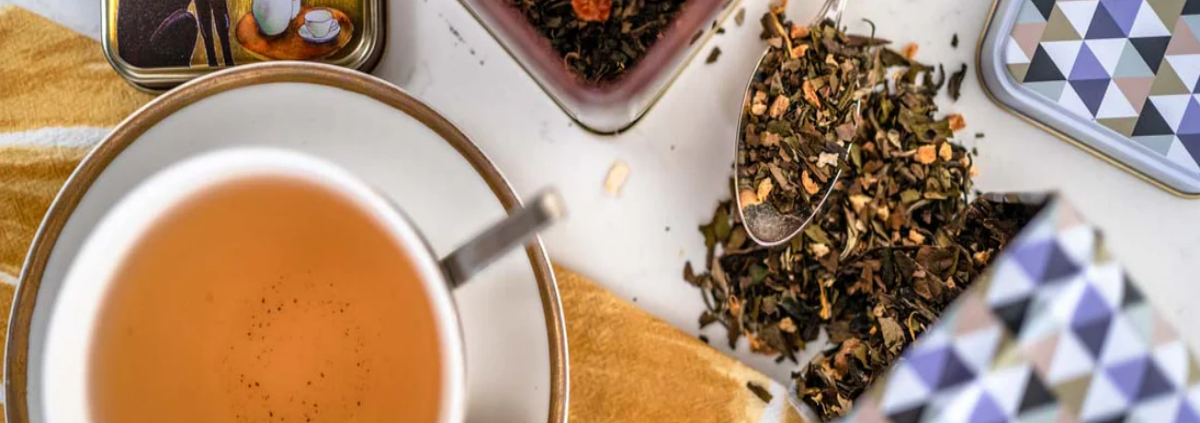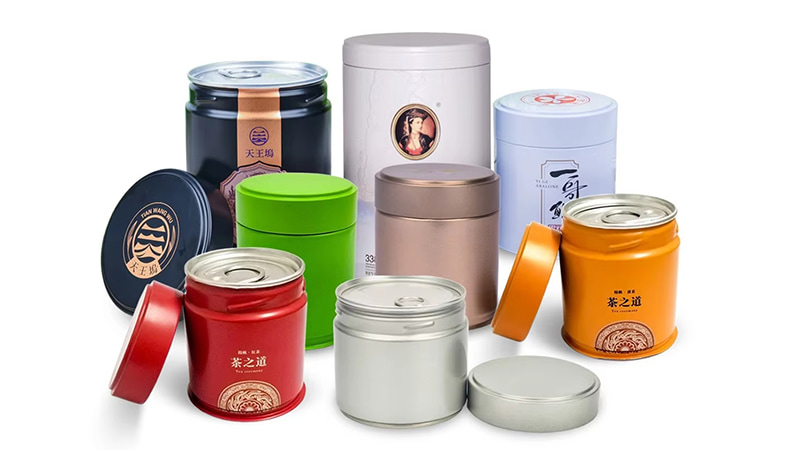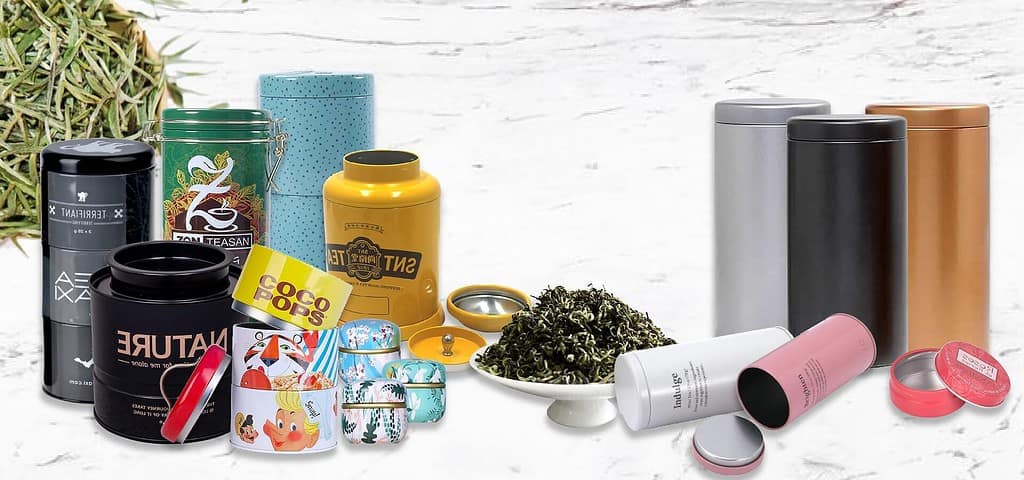What specifications should tea tins have for loose leaf tea and tea bags?
When specifying a tea tin for loose leaf tea and tea bags, it is important to clearly define the intended use, storage environment, portion size, target shelf life, and decorative requirements. For example, a 25g gift tin and a 25g bulk tin are both “tea tins,” but their purposes are very different: the former must be easy to open, suitable for gifting, and preserve the concentrated aroma. The latter, on the other hand, must be durable, stackable, and protect its contents for an extended period. Both packages must restrict the ingress of moisture and oxygen, block light, and prevent the introduction of odors. Therefore, a complete custom tea tin RFQ should specify the base metal and its specifications, the interior paint type and certification, the lid design, and the seal.
Tea Tins Material and Interior Coating
Material selection determines the tea tin’s barrier properties, printability, and recyclability. For most tin can manufacturers, tinplate is the industry standard due to its excellent combination of printability and dimensional stability. Typical sheet thickness ranges from 0.18 to 0.30 mm, with thicker sheets used only for larger tins where rigidity is paramount. Additionally, wherever food contact is anticipated, we use certified interior paints—such as epoxy phenolic, polyester, or acrylic paints that comply with FDA and EU contact regulations. Also, for particularly aromatic or oil-rich blends, we use low-migration paints or insist on using inner bags, as potent flavor compounds may interact with or penetrate delicate coatings. Finally, you need to consider the storage environment so that the tin can factory can select the appropriate material based on food safety and field durability.
Determine the size, shape, and capacity of the tea tins based on the type of tea
The size and shape of the tea tin directly impact filling accuracy, shelf presence, shipping efficiency, and user experience. For loose-leaf tea tins, it is essential to specify both the internal volume and the target net weight, as the bulk density of tea varies significantly between finely ground tea leaves and large whole leaves. Generally speaking, a 25-gram tea tin typically occupies approximately 40-80 ml. A typical 50-gram tin requires 80-140 ml. A 100-gram tin typically corresponds to 150-250 ml. A 250g loose tea tin needs 400ml or more.
Choosing a shape also requires careful consideration. Round tins are classic and visually appealing for single-origin and gift sets, while square tins maximize shelf surface area and pack more efficiently in cartons and trays. At the same time, the lid’s feel should be clearly specified: whether you prefer a tight friction-fit seal for travel or a looser, easy-open design for everyday use, such as a screw-on lid with a gasket for a long-term seal.
Lids, Seals, Liners, and Preservatives
Maintaining aroma and freshness are essential features of any tea container. Your tea tin specifications should clearly indicate whether the packaging’s primary preservation strategy relies on the metal tin itself (with a sealing gasket) or an internal barrier (such as an aluminum foil pouch). Friction-fit lids are suitable for many retail tea tins. If you require a more robust seal, specify a food-grade silicone or elastomeric gasket. For travel or refill tins, a screw-on lid with a gasket provides a reusable seal. For maximum consumer convenience, magnetic lids offer an elegant appearance and perform well with light use, but users should combine them with an inner foil pouch or other barrier for long-term storage. If your brand uses a clear display window, insist on UV-filtering laminate film and inner pouches, as light can quickly deteriorate the tea.
Decoration, Printing, Finishing, and Branding Considerations
Decoration is key to packaging becoming a marketing asset, so specific printing methods and special treatments are required to ensure color consistency and tactile quality. For long runs and high-fidelity graphics, offset or rotogravure printing offers rich full-bleed reproduction and precise Pantone color matching. For short runs, frequent SKU updates, or variable data, digital printing is an affordable alternative that can reduce costs, but color proofing is required to compensate for different substrate reactions. If you require tactile or premium effects, also specify hot stamping colors, embossing depth, or soft-touch varnishes, and provide reference images. Additionally, if your design includes a window, confirm the film’s UV protection.
Precise specifications, preserve flavor, and boost tea sales
High-quality tea caddies not only preserve flavor but also serve as a branding platform. Therefore, it is essential to provide net weight and measured volume requirements based on different tea types, specify the base metal and its specifications, indicate the internal paint type and certification, define the precise lid design and sealing strategy, and specify any commercial restrictions, including minimum order quantities. This ensures that tea tins are tailored to your needs.




 Facebook
Facebook Twitter
Twitter Linkedin
Linkedin
